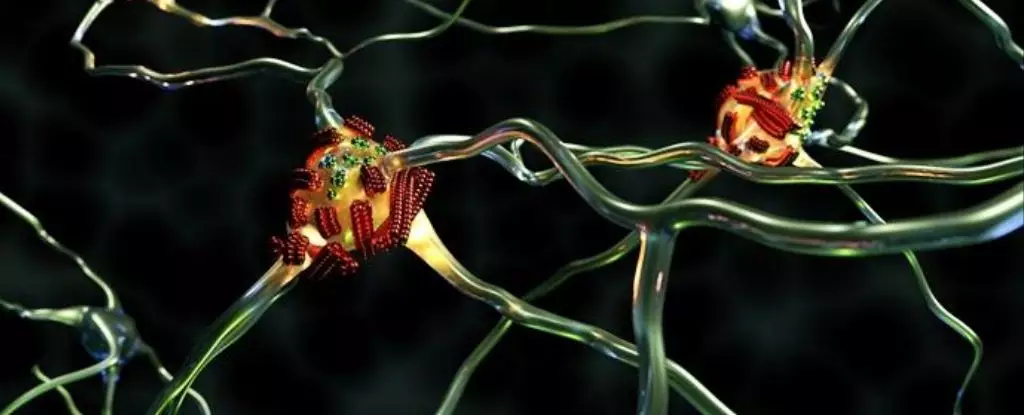Alzheimer’s disease, a complex and debilitating condition, continues to challenge researchers and healthcare professionals alike. Despite significant advances in understanding its pathology, many questions remain, particularly regarding the mechanisms that drive the accumulation of amyloid beta proteins in the brain. A groundbreaking study has recently shed light on a subset of these proteins known as “superspreaders,” which may play a pivotal role in the progression of Alzheimer’s disease. This provides new avenues for research and potential interventions.
A recent study conducted by molecular physicist Peter Nirmalraj and his team from the Swiss Federal Laboratories for Materials Science and Technology has utilized advanced imaging techniques to observe the behavior of amyloid beta proteins in detail. This research is significant because it highlights the existence of a specific variant of amyloid beta that exhibits aggressive self-assembly behaviors, thus earning the classification of “superspreaders.” This term refers to the propensity of certain amyloid beta proteins to rapidly and efficiently accumulate, thereby exacerbating the formation of amyloid plaques, often linked to neurodegenerative processes in Alzheimer’s patients.
Previous research has long wrestled with determining whether these proteins are simply byproducts of Alzheimer’s pathology or if they play a direct causal role in neuronal damage. Laboratory investigations have indicated that amyloid beta plaques do not directly harm neuronal cells, yet they coincide with the cognitive decline of individuals suffering from dementia. Consequently, the identification of superspreader proteins may bridge a critical gap in understanding how and why amyloid beta levels surge during the disease progression.
One of the notable aspects of the study is the methodology adopted to assess the behavior of amyloid beta proteins. By utilizing atomic force microscopy over an extensive observation period, Nirmalraj and colleagues were able to capture dynamic interactions in a salt solution, mimicking the brain’s physiological environment more closely than traditional imaging methods. This approach minimizes the risk of altering the natural morphology and behavior of the proteins, which can happen during staining procedures commonly used in labs.
Their observations revealed that a particular variant of amyloid beta—designated as amyloid beta 42—possesses exceptional catalytic activity at its edges. This feature enables it to attract and integrate additional protein units more effectively than its counterparts, thus fostering quicker accumulation and fostering larger clumps within the brain. The identification of this phenomenon lays the groundwork for further investigation into the biochemical properties that drive these self-assembling processes.
While the discovery of amyloid beta superspreaders offers insight into the mechanisms of plaque accumulation, it inevitably raises new questions about therapeutic interventions. The traditional approach of targeting amyloid plaques as a focal point for treatment has not yielded significant success. The findings suggest that focusing on the properties and behaviors of superspreader proteins may lead to more effective strategies in mitigating their damaging effects.
As the study emphasizes, understanding the structural differences between amyloid beta 42 and other forms of amyloid beta is crucial for elucidating their specific roles in neurodegeneration. Furthermore, considering the complexity of Alzheimer’s disease, researchers are urged to explore a multifaceted approach that takes into account the possibility of other molecular interactions, such as those that might suggest autoimmune involvement in the disease.
Given the intricate and multifarious nature of Alzheimer’s disease pathogenesis, it is essential that research continues to adapt and evolve. As researchers like Nirmalraj make strides in understanding the behavior of amyloid proteins, they simultaneously open doors to new hypotheses and therapeutic avenues. The ultimate goal remains to identify not only how these proteins spread but also how their activity can be modulated or inhibited, paving the way for innovative treatments.
The recent revelations surrounding Alzheimer’s superspreader proteins mark a significant milestone in the realm of neurodegenerative research. Though the journey toward effective therapies is long and fraught with challenges, a deeper understanding of protein behavior could illuminate paths that were previously overlooked, offering hope for the millions affected by this devastating disease.

